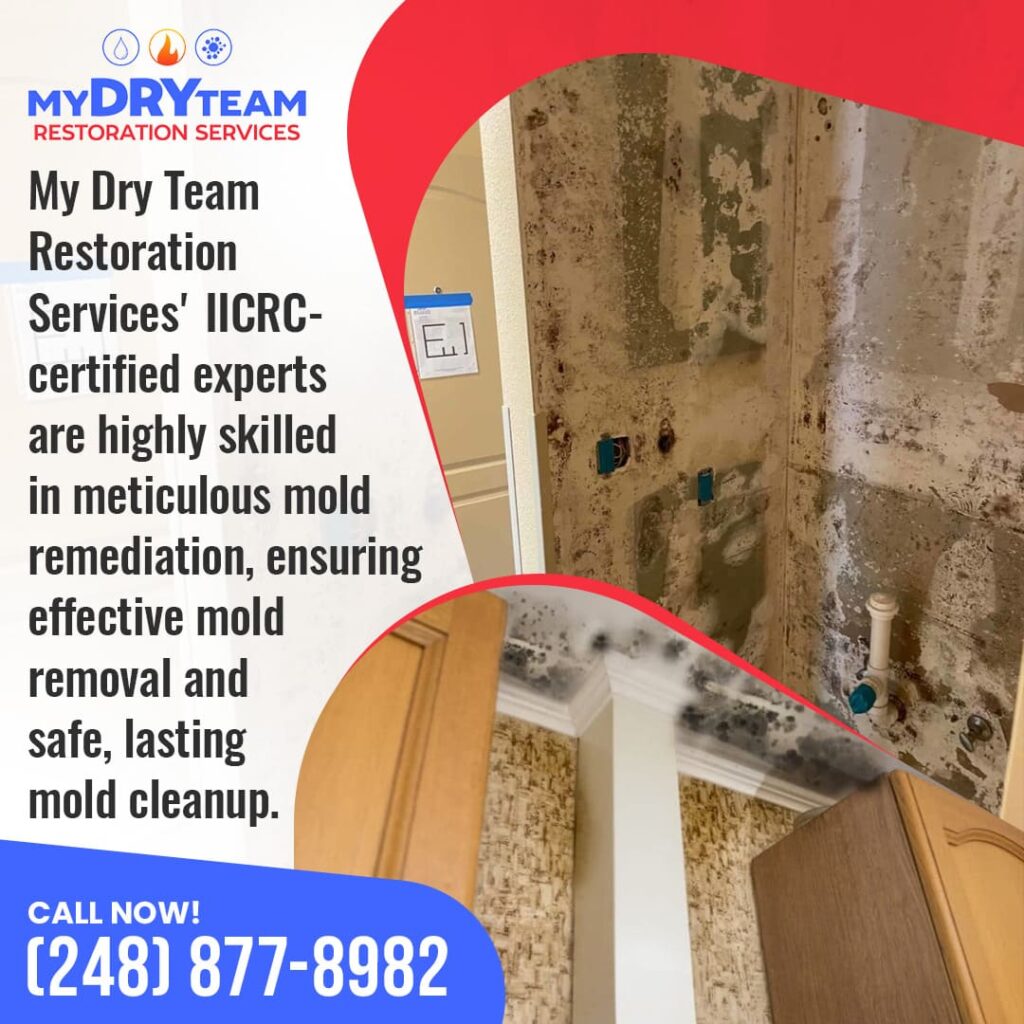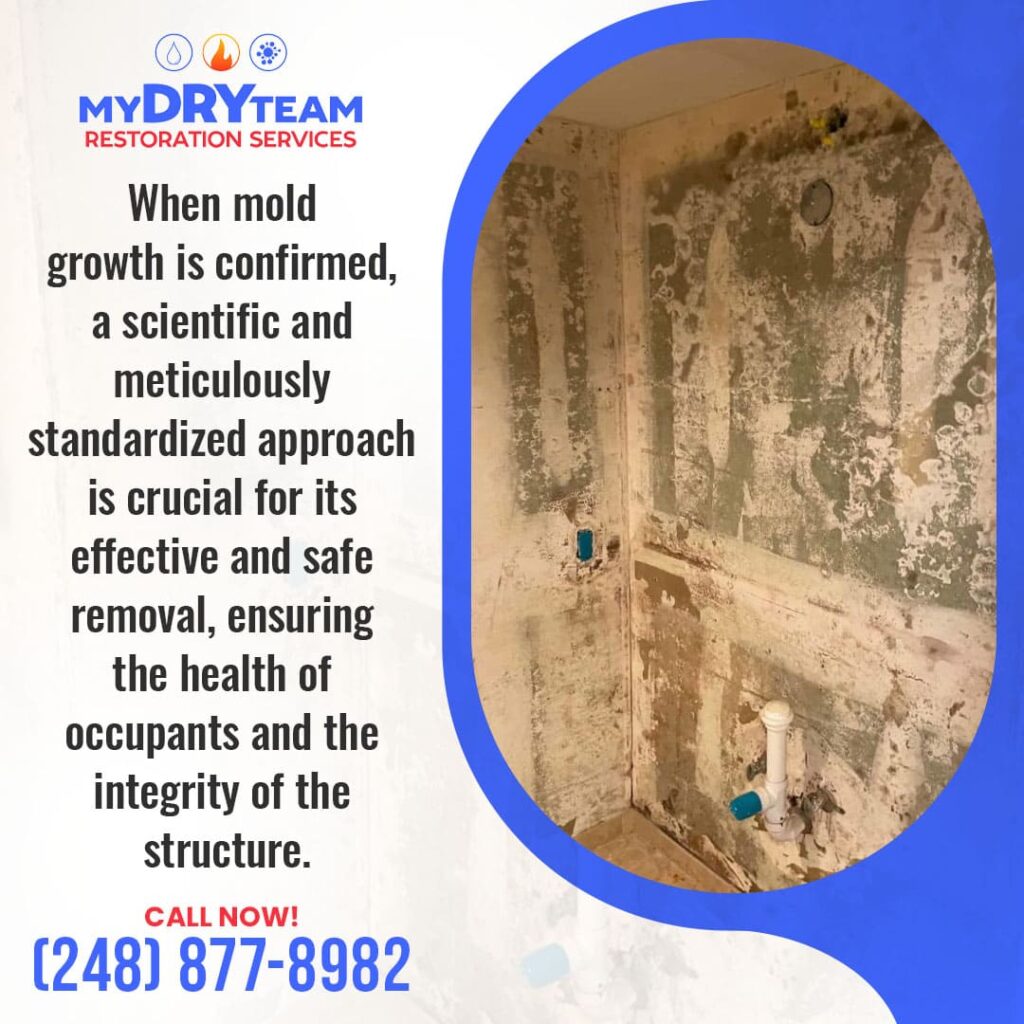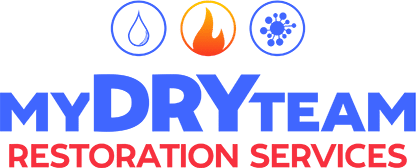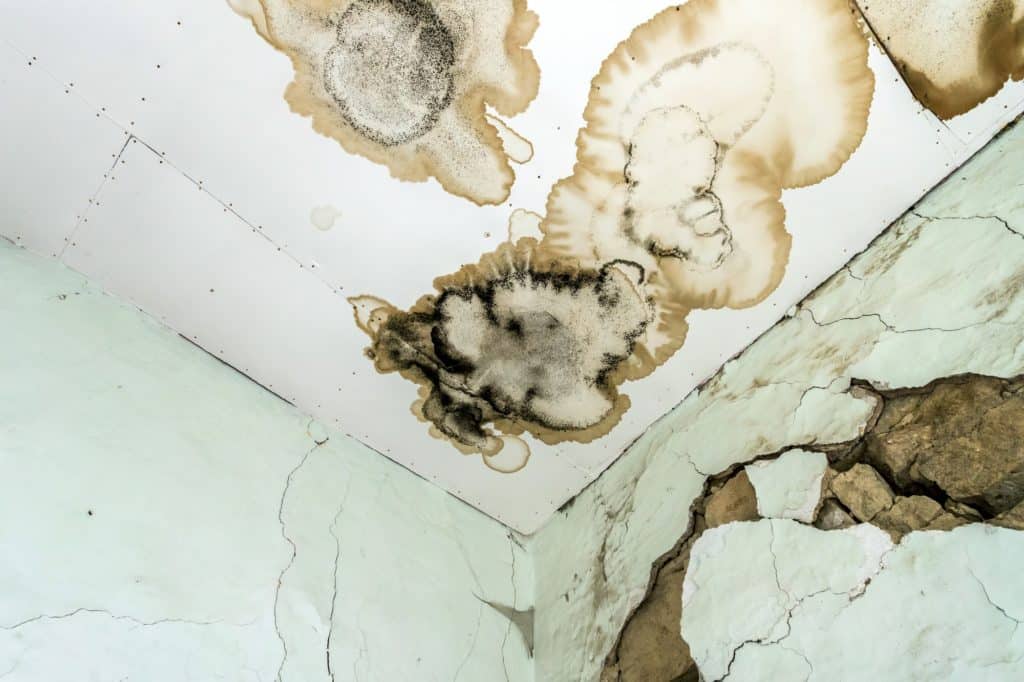Mold presents a persistent problem for homes, workplaces, and the people who occupy them. Addressing this issue requires updated information, practical tools, and prompt action. From prevention practices gaining traction across the country to methods for treating existing growth in Novi properties, each step plays a role in maintaining safer indoor spaces. The following content outlines several key practices for handling mold problems effectively.

Phase 1: Proactive Defense – The USA’s New Focus on Preventing Mold Before a Single Spore Settles
Preventing mold before it starts is becoming a primary focus across the USA, driven by smart technology, building science, and increased public awareness. This proactive stance aims to create environments where mold struggles to gain a foothold, reducing the need for later, more intensive interventions like mold removal.
Smart Homes on Alert: How IoT, AI, and Automated Humidity Control Are Becoming America’s First Line of Defense Against Moisture Intrusion
Smart home technology, including Internet of Things (IoT) devices and Artificial Intelligence (AI), offers homeowners powerful new tools for early moisture detection and automated humidity control, forming a critical first defense against mold. These systems can identify potential problems long before they become visible. For instance, IoT describes the network of physical devices, vehicles, home appliances, and other items embedded with electronics, software, sensors, actuators, and connectivity that enables these objects to connect and exchange data. In the context of mold prevention, this means:
- Smart sensors placed in basements, crawl spaces, bathrooms, and nearby appliances can detect leaks or rising humidity levels, sending instant alerts to a homeowner’s phone.
- Automated dehumidifiers can be set to turn on when indoor humidity levels rise above a specified limit, helping to control moisture in the space.
- AI algorithms can learn a home’s typical moisture patterns and flag anomalies, offering predictive insights into potential mold-conducive conditions, thus preventing the need for future mold removal. Many new homes across the USA are incorporating these systems, and older homes can be retrofitted, providing a significant advantage in the fight against mold.
Building Science Breakthroughs: The National Push for Mold-Resistant Materials and Healthier Construction Standards in New Builds and Renovations
Innovations in building science are leading to the increased use of mold-resistant construction materials and updated building codes across the USA, aiming to design healthier homes from the ground up. This national push fundamentally changes how homes resist mold. Examples of these breakthroughs include:
- Mold-resistant drywall: This product has a non-paper facing or a paper facing treated with antimicrobial agents, making it less hospitable to mold growth compared to traditional drywall.
- Advanced insulation materials: Closed-cell spray foam insulation, for instance, acts as a vapor barrier, reducing condensation buildup within walls, a common source of mold.
- Improved ventilation standards: New construction projects often include advanced ventilation systems, such as Energy Recovery Ventilators (ERVs), which support proper air exchange while reducing energy loss. These systems help regulate indoor humidity levels, which is important for reducing conditions that promote mold growth. This type of technology contributes to building structures that are less prone to moisture-related problems.
Community-Wide Awareness & Education: How Public Health Campaigns Are Changing How Americans View Mold Risks and Prevention
Public health campaigns and educational initiatives across the USA are successfully shifting societal understanding of mold from a mere nuisance to a recognized health hazard. This increased awareness encourages proactive prevention rather than reactive mold cleanup. These campaigns often emphasize:
- The health impacts of mold: Educating the public on how mold exposure can trigger allergies, asthma, and other respiratory conditions.
- Simple preventative measures: Conduct regular home maintenance by checking for leaks, maintaining proper ventilation, and managing indoor humidity levels.
- The importance of professional help: Guiding homeowners to understand when a mold problem requires professional intervention. Organizations like the Environmental Protection Agency (EPA) and the Centers for Disease Control and Prevention (CDC) provide valuable online resources, contributing to a more informed populace ready to tackle mold proactively.
Phase 2: Early Detection – Unmasking Hidden Mold Threats in US Properties Before They Escalate
Detecting mold early, especially hidden growth, is critical to preventing minor issues from escalating into major health hazards and costly property damage. Americans are becoming more vigilant about the subtle signs of mold.
Beyond the Musty Odor: Subtle Physical Symptoms, Unexplained Allergic Reactions, and Neurological Clues as Early Mold Detectors
Unexplained physical symptoms, such as persistent coughs, itchy eyes, skin rashes, or even neurological issues like brain fog, can be early indicators of hidden mold exposure. Recognizing these subtle clues prompts a timely investigation. While a musty odor is a common sign, mold can affect occupants’ health before it’s smelled or seen. Consider these examples:
- A child develops more frequent asthma attacks only when at home.
- An adult experiencing chronic sinus congestion that improves when they spend extended time away from the house.
- Family members report headaches or unusual fatigue that doctors struggle to diagnose. Paying attention to these bodily signals is crucial, as they indicate a hidden mold problem that, if addressed early, could prevent the need for extensive mold removal.
The Air You Breathe & The Surfaces You Don’t See: Advanced Air Quality Testing, ERMI, and Infrared Technology in Preemptive Mold Identification
Advanced diagnostic tools, including detailed air quality testing and infrared imaging, are now commonly used across the U.S. to detect hidden mold. These methods allow for targeted mold cleanup strategies before contamination becomes widespread. Professional mold inspectors may use the:
- Air sampling: This involves collecting air samples to be analyzed in a lab for the type and concentration of mold spores. High levels can indicate an active indoor mold colony.
- Surface sampling: Swabs or tape lifts from suspected surfaces can confirm mold growth and identify the species.
- Infrared (IR) cameras: These cameras detect temperature differences on surfaces, which can indicate moisture anomalies behind walls or under floors where mold might be growing.
- ERMI (Environmental Relative Moldiness Index): This is a DNA-based analysis of a dust sample that can help assess a home’s mold burden, though its interpretation often requires expert consultation. These sophisticated tools provide a much clearer picture of a property’s mold status than visual inspection alone.
Real-Life Case Files from Across the USA: Surprising Mold Havens in Everyday American Homes – From HVAC Systems to Houseplants and Forgotten Spills
Mold can thrive in many surprising and often overlooked locations within American homes, not just the usual suspects like damp basements. Understanding these hidden havens is key to thorough detection. Common but unexpected mold locations include:
- HVAC systems: Ductwork and drain pans can harbor mold, which then gets distributed throughout the home when the system runs.
- Indoor houseplants: Overwatering and poor drainage can lead to mold growth in the soil and on pots.
- Underneath leaking refrigerators or dishwashers: Slow, unnoticed leaks create a perfect environment for mold.
- Behind wallpaper or paneling: When moisture becomes trapped, mold may grow unnoticed for an extended time. These cases highlight the need to inspect beyond visible or commonly affected areas.
Phase 3: The Remediation Revolution – What Modern Mold Remediation Truly Means in the 21st Century USA
Modern mold remediation is a scientific, multi-step process designed to safely and effectively remove mold contamination and prevent its return. It goes far beyond simple cleaning and requires specialized knowledge and equipment.
It’s Not Just Cleaning, It’s Science: The Critical Steps of Professional Containment, Negative Air Pressure, Air Scrubbing, and Source Elimination
True mold remediation involves meticulous containment of the affected area, establishing negative air pressure, thorough air scrubbing, and complete elimination of the moisture source. These scientific protocols are followed by certified US professionals. A professional process typically includes the following:
- Identifying and correcting the moisture source: This is the absolute first step; without it, mold will return.
- Containment: Isolating the contaminated area using plastic sheeting and tape to prevent cross-contamination to other parts of the property.
- Negative air pressure: Maintaining lower air pressure inside the containment area to prevent airborne mold spores from escaping.
- Air scrubbing: Using High-Efficiency Particulate Air (HEPA) filtered air scrubbers to remove airborne mold spores within the contained area. HEPA filters are designed to capture 99.97% of particles that are 0.3 microns in size.
- Safe removal of contaminated materials: Porous materials like drywall or carpet that are heavily contaminated are often removed and discarded according to regulations.
- Cleaning of non-porous surfaces: Affected non-porous or semi-porous materials are cleaned with appropriate antimicrobial solutions.
From Harsh Chemicals to Green Solutions: The National Trend Towards Safer, Eco-Friendly, and Botanical-Based Agents in Professional Mold Removal
A significant national trend in professional mold removal is the shift towards using safer, eco-friendly, and botanical-based cleaning and antimicrobial agents. This benefits both occupant health and the environment. While effective disinfectants are necessary, modern approaches prioritize:
- Low-toxicity products: Minimize the use of harsh chemicals that can leave behind strong odors or harmful residues.
- Botanical solutions: Utilizing plant-based antimicrobials (e.g., thyme oil, citrus seed extract) that have proven efficacy against mold.
- Emphasis on removal, not just killing: Understanding that dead mold spores can still be allergenic, the focus is on physical removal of mold growth. This evolution reflects a greater understanding of indoor air quality and a commitment to healthier remediation practices.
The Novi Standard: Mold Remediation Practices Aligned with Regulatory Requirements for Local Homes and Businesses
For Novi residents, mold remediation practices that are thorough, compliant with industry standards, and effective for local conditions are paramount. This means seeking professionals who understand regional environmental factors. Novi homeowners should expect a top-tier service to:
- Conduct a full inspection while taking into account Novi’s climate conditions, including high summer humidity and the risk of ice dams during winter.
- Provide a detailed remediation plan outlining the scope of work, containment procedures, and safety measures.
- Employ IICRC-certified technicians (Institute of Inspection, Cleaning and Restoration Certification), which is a recognized standard for the restoration industry.
- Address the unique features of Novi homes, such as basements and crawl spaces, which are common areas for mold growth in Michigan.
Phase 4: Life After Mold: Restoring Health and Property Value in U.S. Homes Following Remediation
Managing life after mold includes verifying that remediation was successful, adopting long-term prevention methods, and understanding potential effects on property value. This supports long-term safety and property integrity.
The Crucial Role of Post-Remediation Verification (PRV) and Clearance Testing: A National Best Practice for Consumer Confidence
Post-Remediation Verification (PRV), often involving clearance testing by an independent third party, is a national best practice that confirms a mold cleanup was successful. This provides crucial assurance to homeowners. PRV typically includes:
- Visual inspection: Checking that no visible mold growth or water damage is present.
- Moisture assessment: Confirming that affected materials are thoroughly dry.
- Air and/or surface sampling: Comparing post-remediation spore counts to pre-remediation levels or outdoor reference samples helps determine whether fungal activity has returned to levels typically found in similar environments. This step supports documentation of the remediation outcome and helps confirm that the mold issue has been addressed.
Maintaining a Mold-Hostile Environment: Long-Term Strategies for Air Quality Management and Humidity Control in US Households
Homeowners across the US must adopt long-term strategies for air quality management and humidity control to maintain a mold-hostile environment after professional intervention. This involves ongoing vigilance and lifestyle adjustments. Key strategies include:
- Controlling indoor humidity: Keeping humidity levels ideally between 30-50% using dehumidifiers and proper ventilation, especially in basements and bathrooms.
- Adequate ventilation: Regularly using exhaust fans in kitchens and bathrooms; considering an ERV or HRV for whole-house ventilation.
- Promptly repairing leaks: Addressing any roof, plumbing, or foundation leaks immediately.
- Regular inspections: Periodically checking common mold-prone areas for any signs of new growth or moisture.
Mold’s Effect on Property Disclosure, Insurance, and Resale Value in the US Real Estate Market After Cleanup
Proper documentation of mold remediation is required when selling a property in the United States. Previous mold incidents can affect disclosure obligations, influence insurance decisions, and reduce resale value. Homeowners should be aware that:
- Disclosure laws: Many states require sellers to disclose past or present mold problems to potential buyers. Having professional remediation records, including PRV reports, is beneficial.
- Insurance coverage: Mold damage coverage varies significantly between insurance policies. Some may offer limited coverage, while others exclude it entirely unless tied to a covered peril like a sudden pipe burst.
- Resale value: Unremediated mold can significantly lower property value and deter buyers. Conversely, a professionally remediated and well-maintained home can assure buyers. Addressing mold issues transparently and professionally is key to protecting a property’s financial value.
Novi’s Specific Battlefront: Localized Challenges and Expert Solutions for Mold
Residents of Novi, Michigan, encounter specific local conditions that contribute to mold development. However, professional remediation services and local support options are available to help maintain healthier indoor environments.
Understanding Novi’s Climate and Housing Stock: Common Vulnerabilities to Mold Growth
Novi’s climate, with its humid summers and cold winters leading to condensation, along with its diverse housing stock featuring basements and crawl spaces, presents common vulnerabilities to mold growth. This necessitates specific mold removal awareness. Key local factors include:
- Summer humidity: High outdoor humidity can elevate indoor moisture levels if not managed.
- Winter condensation: Cold exterior surfaces meeting warm, moist indoor air can cause condensation on windows, walls, and attics. Ice dams can also lead to roof leaks.
- Basements and crawl spaces: These below-grade areas, common in Novi homes, are prone to moisture intrusion from groundwater or poor drainage, making them prime spots for mold.
Why Hyperlocal Expertise Matters: The Advantages of Choosing a Novi Mold Remediation Specialist with Regional Knowledge and Rapid Response CapabilitiesFirst
Choosing a Novi mold remediation specialist offers significant advantages due to their understanding of local building codes, common regional mold types, and rapid response capabilities within the community. A local expert will:
- Be familiar with Novi’s specific environmental conditions and how they impact mold growth in local homes.
- Understand common construction styles in the area and their potential vulnerabilities.
- Be able to respond quickly in emergencies, minimizing damage.
- Often, they have established relationships with other local contractors or services if further repairs are needed.
Novi Community Health & Resources: Where Local Residents Can Turn for Reliable Information and Support on Mold Issues
Novi residents can access various local resources for reliable information and support regarding mold issues, promoting community health and well-being. These may include:
- Oakland County Health Division: Often provides public health information and guidance on indoor air quality concerns, including mold.
- Local libraries or community centers may host workshops or provide access to educational materials.
- Reputable, IICRC-certified local mold remediation companies can offer inspections, consultations, and professional advice. Access to accurate information and local support helps residents respond to mold problems more effectively.
Winning the Ongoing War on Mold Through Continuous Education, Innovation, and Action
Winning the ongoing war on mold in the USA requires a multifaceted approach, combining continuous education about its risks, embracing technological innovations for prevention and treatment, and taking decisive, informed action at the first sign of trouble. This commitment is essential for safeguarding both property and health.
For Novi residents and all Americans, prioritizing a healthy indoor environment means being vigilant. Understanding the lifecycle of mold, from how it’s prevented and detected to the intricacies of professional remediation and long-term management, is key. Staying informed and consulting qualified help when needed can reduce the risk that mold presents, helping keep homes and workplaces safe and healthy.

About My Dry Team Restoration Services
My Dry Team Restoration Services provides property restoration support during water and mold-related events. The team offers a full range of services, including immediate water extraction, water damage repair, and flood cleanup for both minor and large-scale situations. Technicians hold IICRC certification and are trained in mold removal and mold cleanup procedures that follow industry standards for safety. The company offers 24/7 emergency response and uses advanced equipment to support restoration efforts. Services are designed to return homes and businesses to safe and functional condition. The team works with attention to detail and consistent service standards to help clients recover from property damage.
Restore Your Property Today
If you’re dealing with the aftermath of water damage or are concerned about mold growth, don’t wait. Contact the certified professionals at My Dry Team Restoration Services for swift, expert, and reliable assistance. We’re ready to help you navigate the recovery process. Call us 24/7 for Emergency Service or to Schedule an Assessment: (248) 877-8982. Email Our Office with Your Questions or Service Requests: office@mydryteam.com. Let our experienced team bring your property back to its pre-loss condition.

